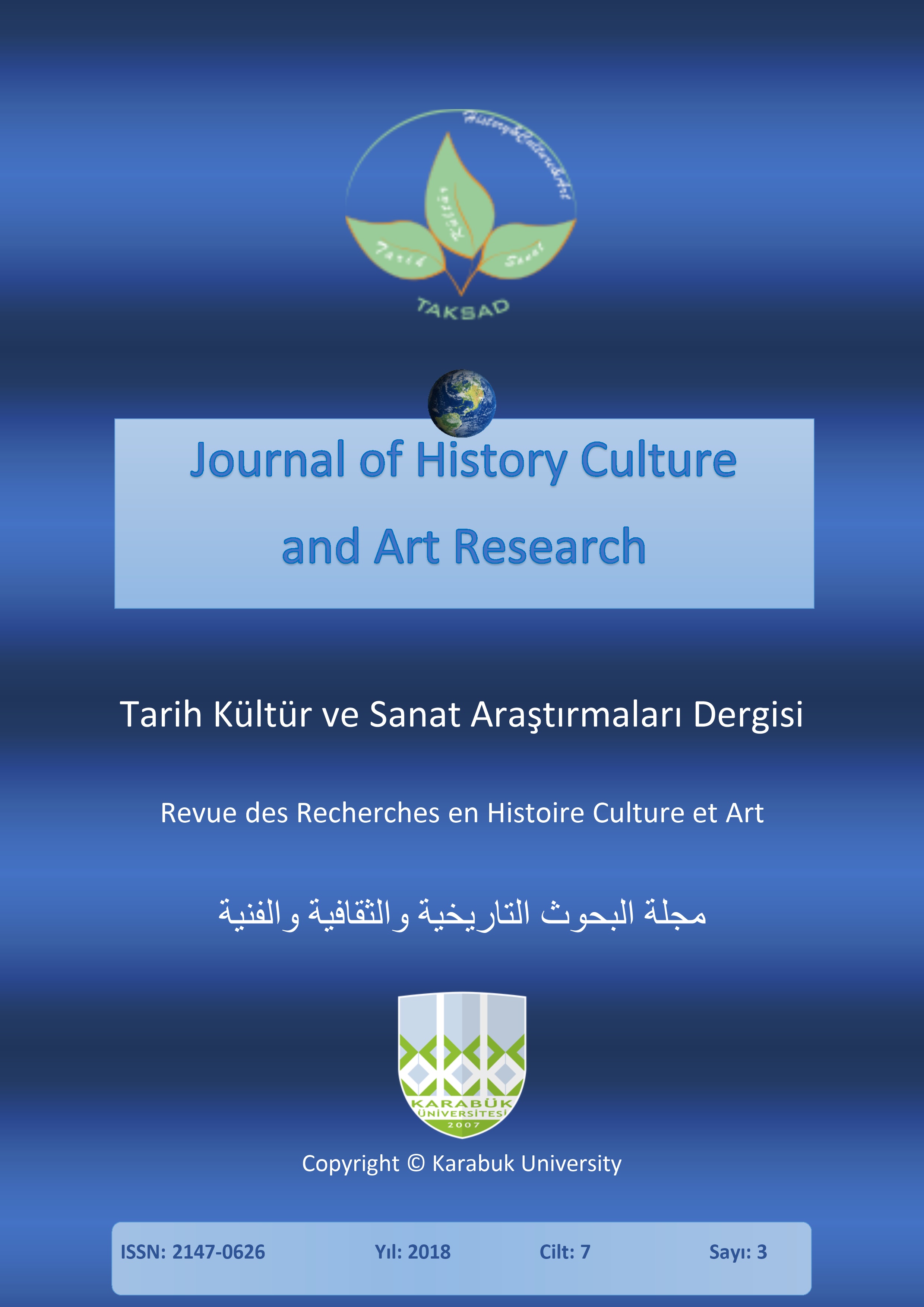The Representation of the Epic Time Concept in Yakut Olonkho and Turkic-Mongolian Epics of Siberia: Structural Models
DOI:
https://doi.org/10.7596/taksad.v7i3.1723Keywords:
Rhythmic and syntactic parallelism, Temporality, Epic TIME formula, EPIC TIME concept, Structural model of the concept, TIME directiveness, Loop-structured TIME, Points of TIME continuum.Abstract
The relevance of this article is justified by the increasing interest in studying epic texts; in this regard, the problem of conceptual structure still requires some insight. The present study discusses a novel topic in which fixed formulas of epic TIME serve as the object of cognitive analysis. These fixed formulas have not yet been studied from the point of the EPIC TIME concept.
The purpose of this research is to single out the concept structure of EPIC TIME in Yakut olonkho and Turkic-Mongolian epics of Siberia and to compare their universal and national features. The following sources served as the basis for the analysis: three olonkho texts, which represent the main regions where the Yakut epics take place and A Guide of Typical Heroic Epic Locations of the Peoples of Siberia by E.N. Kuzmina.
The study of the concept structure of EPIC TIME was achieved using the method of singling out lexicographic definitions of the epic formula components in the macro-context. Implementing the method of structural modeling in the research, models of concept structures which form the basis of the epic TIME semantic formulas were singled out. The temporal concept structure is based on the rhythmic and syntactic parallelisms and literal repetitions in the epic TIME formulas. The correlation of rhythmic and syntactic parallelisms and literal repetitions helps to explain the aspects of epic TIME. The singled out concept structures are further compared using the concept analysis method.
Having analyzed the definition to the concept of EPIC TIME in Yakut olonkho and Turkic-Mongolian epics of Siberia, it became apparent that there is a convergence between the two epics on the grammatical level of analysis. However, there are also instances of implicit differences in the analyzed concepts. These instances are located in the deep structure of the concepts. First of all, TIME measurement units do not coincide with each other; secondly, the initial storyline points and the directiveness of the EPIC TIME do not match; thirdly, the secondary and indirect attributes, which assist in positioning the EPIC TIME, do not coincide.
References
Alekseev, I. E. (2016). On the t-formulas of olonkho narration. Vestnik of Notrh-Eastern Federal university: Series Epic studies. №4 (4), doi: 10.25587/SVFU.2016.4.10855, 47-51.
Atlasov, V. V. (2004). Khaarylla Mokhsoghol. Muoma olokholoro. Institute of Humanities, Olonkho Association of the Republic. Yakutsk: Bichik Press.
Belyaevskaya, E. G. (2008). Component Analysis Vs Concept Analysis. Journal of the Moscow State Linguistic University. Linguistics series, 554, 140-146.
Chervaneva, V. A. & Artemenko, E. B. (2004). Time and space in the folklore and linguistic world view (epic genres as a case-study). Voronezh: Voronezh State Pedagogical University.
Dubovaya, E. V. (2015). Expressive means in depicting the time continuum in epic texts (The Song of Roland as a case-study). Scientific periodic edition "IN SITU", 5, 56-64.
Govorukhin G. E. & Dudchenko, O. V. (2014). Features of cognitive perception of space by the ancient people (epic texts as a case-study). Scientific notes of the Orel State University. Series: Humanities and Social Sciences, 4(60), 82-88.
Karataev, V. O. (1996). Yakut heroic epic "The Mighty Er Sogotokh". Novosibirsk: Nauka Press. Siberian Publishing Company of the RAS (Folklore of the Peoples of Siberia and the Far East of Russia).
Kuzmina, E. N. (2005). Guide of Typical Heroic Epic Locations of the Peoples of Siberia). A special edition of the Institute of Philology of the SD of the RAS. Novosibirsk: Publishing house of the Siberian Division of the Russian Academy of Science.
Meletinsky, E. M. (1998). Selected articles. Memoires. Moscow: Russian State University of Humanities.
Minakova, I. A. (2010). Singling out gender features of a linguistic individual on the basis of non-fiction lexical units analysis with a temporal component. Journal of the Chelyabinsk State University. Philology. Art Studies, 4 (185). 40th edition, 129-134.
Petrov, V. M. & Mazhul, L. A. (2011). Temporal modeling in poetry (Experience in experimental study of perception). The World of Psychology Journal, 3, 75-87.
Rubert, I. B. & Dolgova, N. B. (2003). The main features of mythological time in Anglo-Saxon epic texts. Newsletter of the A.I. Herzen Russian State Pedagogical University, 3 (5), 53-63.
Shirokova, E. N. (2012). Multi-aspect feature of fictional time as a means of the author's individual conceptualization of time. Journal of the N.I. Lobachevsky Nizhny Novgorod University, 2 (1), 381-385.
Yadrihinsky, P. P. (2011). Female bogatyr Dzhyrybyna Dzhyrylyatta. Yakut heroic epic. M.K. Ammosov North-Eastern Federal University, Institute of Olonkho Studies, Institute of Languages and Culture of the North-Eastern of the Russian Federation. Yakutsk: Saidam Press.
Downloads
Published
How to Cite
Issue
Section
License
All papers licensed under Creative Commons 4.0 CC-BY.- Share — copy and redistribute the material in any medium or format
- Adapt — remix, transform, and build upon the material for any purpose, even commercially.
Under the following terms:
Attribution — You must give appropriate credit, provide a link to the license, and indicate if changes were made. You may do so in any reasonable manner, but not in any way that suggests the licensor endorses you or your use.
- No additional restrictions — You may not apply legal terms or technological measures that legally restrict others from doing anything the license permits.







